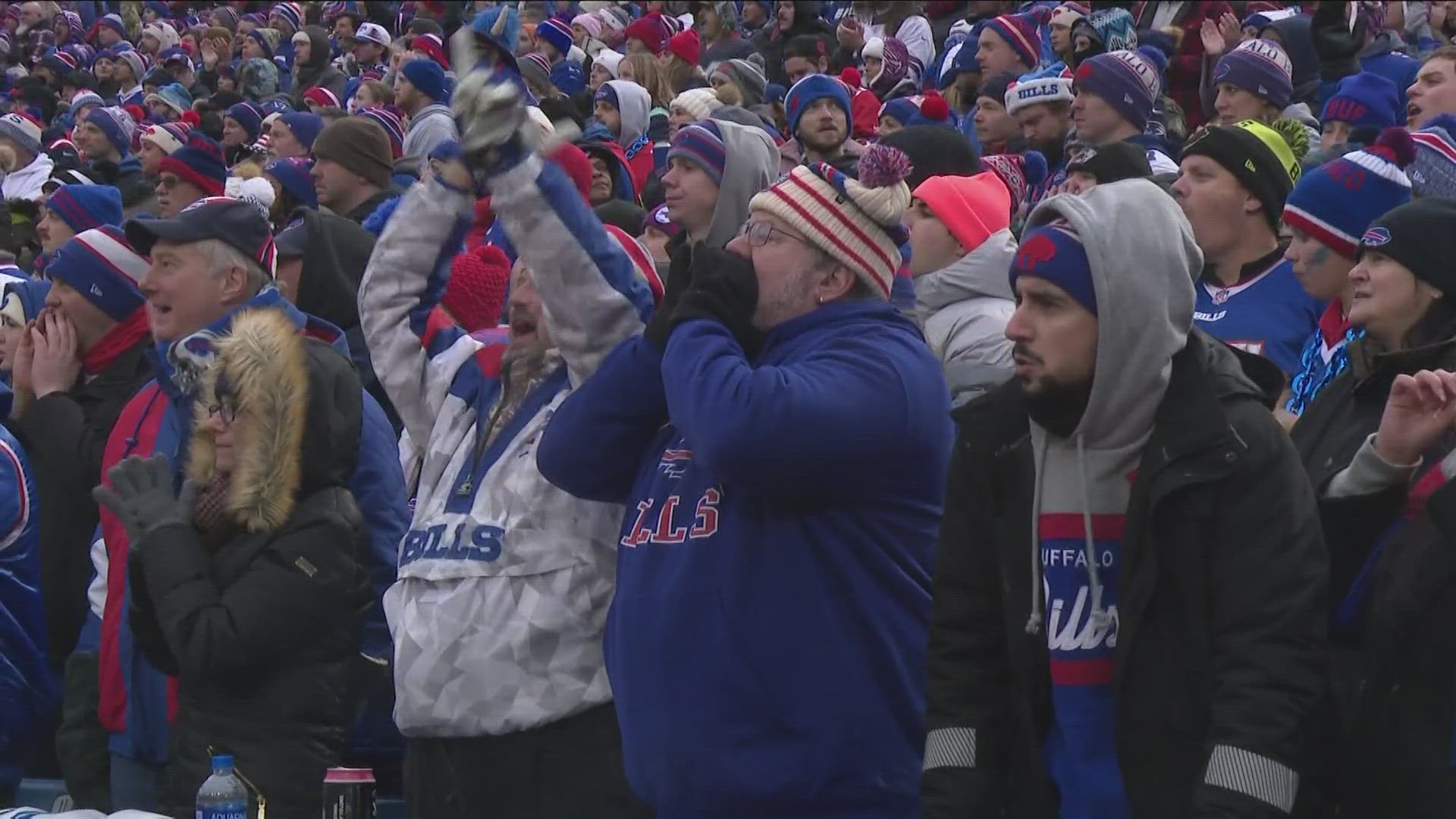BUFFALO, N.Y. — The winter weather is upon us and so are the winter storms. If you are planning to be outside for any extended time, you'll want to take some precautions to avoid frostbite or hypothermia.
RELATED: Storm Team 2 Weather Forecast
Here are some tips to help keep you safe and warm:
- If you're traveling to the Bill's game or anywhere this weekend, make sure your care is ready for the cold weather. Service the radiator and maintain antifreeze level; check tire tread or, if necessary, replace tires with all-weather or snow tires. Keep an emergency kit in your car including blankets, food and water, first aid and other items you may need if you are stranded.
- Take precaution when spending time outdoors. Wear appropriate outdoor clothing and be aware of the wind chill factor. Wear boots, hats, gloves/mittens, socks, etc.. New this season, the Buffalo Bills have approved battery-operated clothing. Check weather reports and always have a fully charged cellphone and carry a portable recharger, if possible
- Be aware of current and forecast weather conditions when planning for travel. With lake effect snow, it could be flurries in one town, and near whiteouts a few miles away.
- Learn how to avoid, spot and treat frostbite and hypothermia. According to the CDC, hypothermia is caused by prolonged exposures to very cold temperatures. People who are outside for a prolonged period should be aware of these sings of hypothermia:
- Shivering
- Exhaustion or feeling very tired
- Confusion
- Fumbling hands
- Memory loss
- Slurred speech
- Drowsiness
If you come across someone suffering from hypothermia, the CDC recommends the following:
- Get the person into a warm room or shelter.
- Remove any wet clothing the person is wearing.
- Warm the center of the person’s body—chest, neck, head, and groin—using an electric blanket, if available. You can also use skin-to-skin contact under loose, dry layers of blankets, clothing, towels, or sheets.
- Warm drinks can help increase body temperature, but do not give alcoholic drinks. Do not try to give beverages to an unconscious person.
- After body temperature has increased, keep the person dry and wrap their body, including their head and neck, in a warm blanket.
- Get the person proper medical attention as soon as possible.
Frostbite is an injury to the body caused by freezing. People who aren't properly dressed for extremely cold temperatures are at risk of frostbite. Signs of frostbite include:
- redness or pain in any skin area
- A white or grayish-yellow skin area
- Skin that feels unusually firm or waxy
- Numbness
If someone is experiencing these symptoms, the CDC says:
- Get the person into a warm room as soon as possible.
- Unless absolutely necessary, do not walk on feet or toes that show signs of frostbite—this increases the damage.
- Do not rub the frostbitten area with snow or massage it at all. This can cause more damage.
- Put the areas affected by frostbite in warm—not hot—water (the temperature should be comfortable to the touch for unaffected parts of the body).
- If warm water is not available, warm the affected area using body heat. For example, you can use the heat of an armpit to warm frostbitten fingers.
- Do not use a heating pad, heat lamp, or the heat of a stove, fireplace, or radiator for warming. Affected areas are numb and can easily burn.
The CDC says if anyone is suffering from any of these symptoms of hypothermia or frostbite, they should seek medical attention as soon as possible.
RELATED VIDEO:

